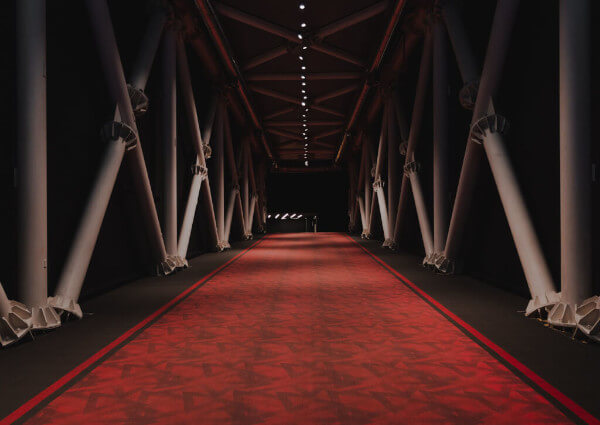Browse the Architizer Jobs Board and apply for architecture and design positions at some of the world’s best firms. Click here to sign up for our Jobs Newsletter.
As the sea-level rises, increasing population and diminishing flatlands pose the following conundrum: How can humanity accommodate more people with limited lands? This is quickly becoming an essential and typical urban problem for architects, developers and local government. High-rise buildings have long been seen as a problem-solver capable of vertically expanding the limitations of a small site footprint in order to provide more residential and working spaces in cities. The future city, according to the booming trends of building up, might be a skyscraper forest.
Such scenes have already been depicted in many architects’ futuristic urban designs. However, as super-high-rise office buildings in central business districts compete for the top height — in many parts of the work, to accommodate more companies or satisfy certain business demands — the question worth asking: should residential buildings also compete to be the tallest and skinniest one? In recent years, New York has been a testing ground for the answer to this question.
Just as some skyscrapers advertise the privilege of working beyond the clouds, more and more developers are aspiring to satisfy the desires of the world’s elite to flex their wealth and status by promising them a home up in the air. No longer dedicated to solving the housing problems for dense populations, architects who undertake these projects guarantee buyers the best view of the cityscape (for those on the upper floors), while also maximizing the profits of the developer by reaching taller and taller. As these residential towers grow taller, they become attenuated. No longer designed to solve urban problems, are these structures destined to become problematic in and of themselves?

Image by The Skyscraper Museum
Millions of Dollars for Living in the Sky: Is It Even Worth It?
The burgeoning legal saga of 432 Park Avenue in Manhattan, New York indicates that the unsolved technical problems in the super-high-rise residential buildings, such as flooding pipes, unstable elevator services and constant noises caused by structural components, are more than inconvenient; they could become life-threatening to their residents. For those who haven’t followed the coverage, residents in this building were caged for hours due to the unstable elevator services on multiple occasions.
The 425-meter-tall residential tower, which includes 125 living units whose price ranges from some 5 million dollars to over 100 million dollars, is supposed to offer privileged living experiences. Unfortunately, apart from the house price, residents in 432 Park Avenue have now had to spend extra money hiring engineering consultants and lawyers in order to fight for the comfortable and safe domestic living that they say that they paid for. So far, more than 1,500 construction and design defects were identified as “life safety issues” by the engineering consultant. In September 2021, residents sued the building’s developers based on the engineering report.
As architects, we know that a part of the reasons for the high price is that these foreseeable technical problems on super skinny towers are difficult and costly to tackle — or to ever fully solve. For example, the elevators, a necessity of skyscrapers, are highly likely to malfunction due to possibility of uneven force distributions among elevator cables, especially when buildings sway severely during windy days. Additional problems include drastically difficult emergency evacuation, undesirable stack effect and noises caused by air friction in deep elevator shafts, extra efforts to set up and maintain water and electricity supply for the whole building, etc.
Sometimes, even though all technical issues are predicted and thoroughly considered, any small mistake in the building’s design, construction or maintenance could still trigger the above problems. The question requiring reflection becomes: Should we, as architects, stop designing and pursuing the skinniest and tallest buildings, as we wait to be sure that these technical issues can be well handled?

The conceptual project Planet City that tackles future urban problems by Liam Young, image via Worldarchitecture.
Should We Stop Building Skinny Skyscrapers for Good?
Before answering the question, let us ask another question: what is so attractive about living in the sky? The answer might be the ‘unblocked’ views. In cities with high-rise jungles, views from lower floors are rarely that desirable. Unblocked vistas that fly over lower buildings’ roofs — as well as the distant coasts or mountains — therefore become a privilege and a scarce resource. Living in an upper-floor home, therefore, is closely engaged with the richest and most powerful “1%” of the society.
As Adrian Forty wrote in his book Objects of Desire, “…design tells people what they ought to think about the home and how they ought to behave there.” Design has the power to influence people’s behavior; yet, disrupting the chain of supply-demand is only possible if designers are joined by managers/developers, customers and local governments. At present, this truly seems like a pipe dream.
While there is still a need to explore more economical and practical ways for solving technical issues of super-high-rise residential buildings, are these skinny residential buildings the only way to respond to the demands of “unblocked view”? As architects, at least until there are engineering breakthroughs for these issues, should we stop the fashion of building taller and skinnier skyscrapers for residential uses? Could we, by employing other technologies such as vertical gardens, holograms and virtual/augmented reality, come up with other ways to approach domestic sight enjoyment without sacrificing residents’ safety and convenience? Hopefully, decades or centuries later, when skinny skyscrapers are no longer rare and expensive, there will be one day that these towers are built for the general welfare.
Browse the Architizer Jobs Board and apply for architecture and design positions at some of the world’s best firms. Click here to sign up for our Jobs Newsletter.
The post The Skinny on Supertall Skyscrapers: Problem-Solving or Problematic? appeared first on Journal.
Did you miss our previous article…
https://thrivingvancouver.com/?p=131